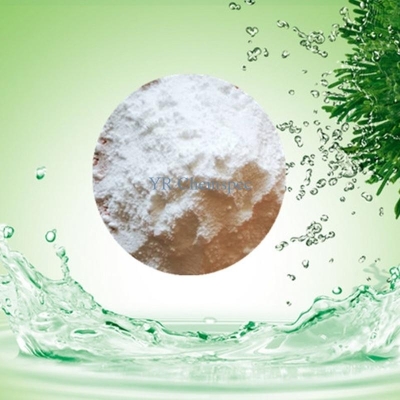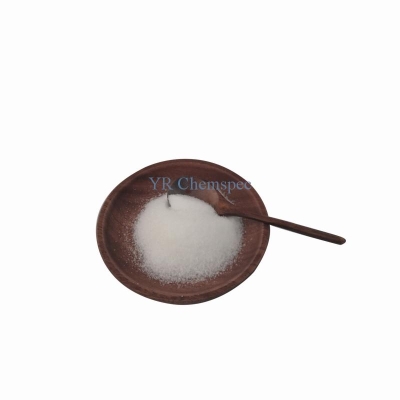-
Categories
-
Pharmaceutical Intermediates
-
Active Pharmaceutical Ingredients
-
Food Additives
- Industrial Coatings
- Agrochemicals
- Dyes and Pigments
- Surfactant
- Flavors and Fragrances
- Chemical Reagents
- Catalyst and Auxiliary
- Natural Products
- Inorganic Chemistry
-
Organic Chemistry
-
Biochemical Engineering
- Analytical Chemistry
- Cosmetic Ingredient
-
Pharmaceutical Intermediates
Promotion
ECHEMI Mall
Wholesale
Weekly Price
Exhibition
News
-
Trade Service
Iodine deficiency can cause big neck disease, but have you seen it? I believe many young people have never seen it at all
The ancients didn't know the element of iodine, and there was no iodized salt.
In recent years, there is a view that China does not lack iodine, at least not so common and serious
.
The ancients didn't know the element of iodine, and there was no iodized salt.
It wrote, "Three Gorges women, ten people have nine galls", the incidence is so high that he was scared to death when he went to Kuizhou (Chongqing) to take up his post
.
.
Henan is the place where ancient literati and inkmen stayed.
Many records about big neck disease are related to this place
.
For example, Wang Anshi of the Northern Song Dynasty wrote in "Ru Ying and Wang Zhongyi", "Rushui is out of the mountains in danger, and Ru people are sick with galls
.
" In the Southern Song Dynasty, Hong Mai described Guanxia Temple in Luoyang in "Yi Jian Zhi", "The monks and servants of the temple are all sick and gall
.
" In the Yibin Collection by Wang Yi in the Yuan Dynasty, it was recorded that "I have met nineteen galls, and I have never been ashamed to hide my clothes
.
"
Many records about big neck disease are related to this place
.
For example, Wang Anshi of the Northern Song Dynasty wrote in "Ru Ying and Wang Zhongyi", "Rushui is out of the mountains in danger, and Ru people are sick with galls
.
" In the Southern Song Dynasty, Hong Mai described Guanxia Temple in Luoyang in "Yi Jian Zhi", "The monks and servants of the temple are all sick and gall
.
" In the Yibin Collection by Wang Yi in the Yuan Dynasty, it was recorded that "I have met nineteen galls, and I have never been ashamed to hide my clothes
.
"
In ancient times, large neck disease was not only common, but the incidence rate was also very high in some areas, such as the Three Gorges area in the Yangtze River Basin.
There are many records in historical documents
.
For example, Wang Wei of the Tang Dynasty wrote in "Lin Yuan Yi Shi Ji Shi Ji", "When there is a lot of land, people will bring Jingzhou galls", which shows how common the big neck disease in Jingzhou is
.
Lu Song wrote in the poem, "(Kuizhou) pedestrian likelihood gall, accustomed to seeing ever Gu Ying shame"
.
Fan Chengda in the Southern Song Dynasty in "Zhaojun Terrace"
There are many records in historical documents
.
For example, Wang Wei of the Tang Dynasty wrote in "Lin Yuan Yi Shi Ji Shi Ji", "When there is a lot of land, people will bring Jingzhou galls", which shows how common the big neck disease in Jingzhou is
.
Lu Song wrote in the poem, "(Kuizhou) pedestrian likelihood gall, accustomed to seeing ever Gu Ying shame"
.
Fan Chengda in the Southern Song Dynasty in "Zhaojun Terrace"
It wrote, "Three Gorges women, ten people have nine galls", the incidence is so high that he was scared to death when he went to Kuizhou (Chongqing) to take up his post
.
.
Henan is the place where ancient literati and inkmen stayed.
Many records about big neck disease are related to this place
.
For example, Wang Anshi of the Northern Song Dynasty wrote in "Ru Ying and Wang Zhongyi", "Rushui is out of the mountains in danger, and Ru people are sick with galls
.
" In the Southern Song Dynasty, Hong Mai described Guanxia Temple in Luoyang in "Yi Jian Zhi", "The monks and servants of the temple are all sick and gall
.
" In the Yibin Collection by Wang Yi in the Yuan Dynasty, it was recorded that "I have met nineteen galls, and I have never been ashamed to hide my clothes
.
"
Many records about big neck disease are related to this place
.
For example, Wang Anshi of the Northern Song Dynasty wrote in "Ru Ying and Wang Zhongyi", "Rushui is out of the mountains in danger, and Ru people are sick with galls
.
" In the Southern Song Dynasty, Hong Mai described Guanxia Temple in Luoyang in "Yi Jian Zhi", "The monks and servants of the temple are all sick and gall
.
" In the Yibin Collection by Wang Yi in the Yuan Dynasty, it was recorded that "I have met nineteen galls, and I have never been ashamed to hide my clothes
.
"
Shanxi, Hebei, Shaanxi, Shandong, Xinjiang and other places also have similar written records
.
For example, Zhang Zhu's "Shu Ji" in the Yuan Dynasty described that when he passed Wu'an County by the Zhang River, he saw "there are many people in the mountain city, but the sandy ditch is not hairy"
.
Xu Ben of the Ming Dynasty wrote in "Qinshui County", "The climate is very strange, ten people have five births
.
" In the Ming Dynasty Chen Jiang's "Small Records of Things" stated: "There are ten galls and nine yans living in the Tai (Thai) mountains for hundreds of miles
.
" In Ming Dynasty Liu Yuanqing's "Nan Qi Zhi Jian" records, the local people have big neck disease, and even think that the thin neck of normal people is different
.
"Ye Di Jicheng" of the Qing Dynasty stated: "Women in southern Xinjiang often have bristles on their necks, small as oranges and big as pomelos"
.
.
For example, Zhang Zhu's "Shu Ji" in the Yuan Dynasty described that when he passed Wu'an County by the Zhang River, he saw "there are many people in the mountain city, but the sandy ditch is not hairy"
.
Xu Ben of the Ming Dynasty wrote in "Qinshui County", "The climate is very strange, ten people have five births
.
" In the Ming Dynasty Chen Jiang's "Small Records of Things" stated: "There are ten galls and nine yans living in the Tai (Thai) mountains for hundreds of miles
.
" In Ming Dynasty Liu Yuanqing's "Nan Qi Zhi Jian" records, the local people have big neck disease, and even think that the thin neck of normal people is different
.
"Ye Di Jicheng" of the Qing Dynasty stated: "Women in southern Xinjiang often have bristles on their necks, small as oranges and big as pomelos"
.
The description of big neck disease in ancient times was not accurate, and relatively reliable survey statistics did not appear until modern times
.
For example, during the period of 1940-1942 during the Republic of China, the epidemic prevention team of the Yunnan Provincial Laboratory
.
For example, during the period of 1940-1942 during the Republic of China, the epidemic prevention team of the Yunnan Provincial Laboratory
The survey data of many people estimated that the incidence of goiter was about 15%
.
The Xinjiang Daily in 1944 reported that one third of the 800,000-plus population in Aksu, Shache, Kashgar, and Hotan had goiters
.
The 1946 "Investigation Report on the Handling of the Epidemic Policy" records: Iodine deficiency diseases are quite serious in southern Shaanxi and other places, and big neck diseases and stubbornness can be seen everywhere.
There is a popular spread of "one generation is rough, second generation silly, three generations and four generations have broken roots and shoots".
Argument
.
.
The Xinjiang Daily in 1944 reported that one third of the 800,000-plus population in Aksu, Shache, Kashgar, and Hotan had goiters
.
The 1946 "Investigation Report on the Handling of the Epidemic Policy" records: Iodine deficiency diseases are quite serious in southern Shaanxi and other places, and big neck diseases and stubbornness can be seen everywhere.
There is a popular spread of "one generation is rough, second generation silly, three generations and four generations have broken roots and shoots".
Argument
.
After the founding of the People's Republic of China, the country paid more attention to the prevention and treatment of endemic diseases, and many investigations and studies were carried out in various places
.
For example, in the survey of tens of thousands of people in northern Hubei in 1958, the average prevalence of goiter was 22.
5%
.
The capital of Guizhou Province in 1976
.
For example, in the survey of tens of thousands of people in northern Hubei in 1958, the average prevalence of goiter was 22.
5%
.
The capital of Guizhou Province in 1976
More than 4,000 people were surveyed in Yunxian County, and goiter accounted for 53.
6%
.
Surveys in the 1970s showed that iodine deficiency diseases were prevalent in most areas of China to varying degrees, with about 720 million people at risk, 35 million people with large neck diseases, and 250,000 people suffering from minor diseases
.
6%
.
Surveys in the 1970s showed that iodine deficiency diseases were prevalent in most areas of China to varying degrees, with about 720 million people at risk, 35 million people with large neck diseases, and 250,000 people suffering from minor diseases
.
In 1979, major wards across the country began to promote the implementation of prevention and control strategies based on salt iodization, but the epidemic situation of the disease has not been fundamentally changed
.
In 1981, more than 5000 people were surveyed in Huoshan County, Anhui Province.
The prevalence rate of goiter was 22.
7%, and half of the adolescents aged 7-14 were affected
.
In the early 1990s, more than 80,000 people were surveyed in Xuzhou, and the proportion of goiter was 5.
6-54.
4%
.
There are countless similar data
.
All these evidences show that China has been short of iodine since ancient times, and big neck disease has blossomed everywhere.
This is an unchangeable fact determined by the geographical environment
.
The complete elimination of iodine deficiency disorders has been a matter of more than two decades.
The turning point was China's adoption of the Comprehensive Salt Iodization Strategy (USI) promoted by the World Health Organization
.
It is understandable that young people do not understand history, but many elderly people also regard iodized salt as a scourge, which is really strange
.
.
In 1981, more than 5000 people were surveyed in Huoshan County, Anhui Province.
The prevalence rate of goiter was 22.
7%, and half of the adolescents aged 7-14 were affected
.
In the early 1990s, more than 80,000 people were surveyed in Xuzhou, and the proportion of goiter was 5.
6-54.
4%
.
There are countless similar data
.
All these evidences show that China has been short of iodine since ancient times, and big neck disease has blossomed everywhere.
This is an unchangeable fact determined by the geographical environment
.
The complete elimination of iodine deficiency disorders has been a matter of more than two decades.
The turning point was China's adoption of the Comprehensive Salt Iodization Strategy (USI) promoted by the World Health Organization
.
It is understandable that young people do not understand history, but many elderly people also regard iodized salt as a scourge, which is really strange
.
Trivia
In order to hide the ugliness, the ancients had clothes specially designed for big neck diseases
.
Wang Anshi’s description is “women’s height is temporarily high, men are big and wide,”; Su Shi wrote in “Beyond Huangzhou” that “long waist still supports intestines and rice, wide leading to cut garments”; Qing Dynasty’s “Shi Shi "Nanfu Zhi" has a poem saying "I came to Yi Mausoleum by myself, women gall necks
.
There are no springs in the mountains, and the clothes are often wide-necked"
.
.
Wang Anshi’s description is “women’s height is temporarily high, men are big and wide,”; Su Shi wrote in “Beyond Huangzhou” that “long waist still supports intestines and rice, wide leading to cut garments”; Qing Dynasty’s “Shi Shi "Nanfu Zhi" has a poem saying "I came to Yi Mausoleum by myself, women gall necks
.
There are no springs in the mountains, and the clothes are often wide-necked"
.
This article is an English version of an article which is originally in the Chinese language on echemi.com and is provided for information purposes only.
This website makes no representation or warranty of any kind, either expressed or implied, as to the accuracy, completeness ownership or reliability of
the article or any translations thereof. If you have any concerns or complaints relating to the article, please send an email, providing a detailed
description of the concern or complaint, to service@echemi.com. A staff member will contact you within 5 working days. Once verified, infringing content
will be removed immediately.







